a mid-19th century soda bottle discovered during excavations at wolf point; more to follow
This entry was posted on December 20 2014 by Eric
i recently acquired a remarkable cobalt blue iron pontil glass soda bottle that was recovered from a wood-lined privy pit dating to the 1850's. interestingly, the bottle is not native to chicago, although other bottles found where identified as chicago-based lomax and competitor hutchinson, who had bottling operations during this time period. the image below was taken from the 1853 bird's eye lithographic view of chicago, drawn by j.t. palmatary for chr. inger. herline & hensel, lith.
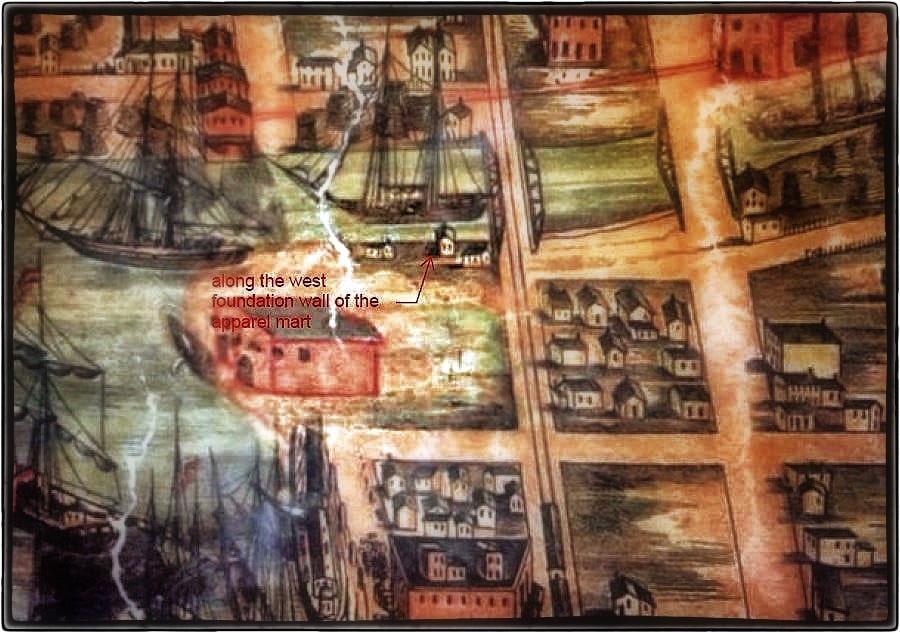

the c. 1851 f. gleason deep blue bottle was discovered at the site of the apparel center in the early 1980's. the bottle was retrieved from the very bottom of a wood-lined privy that also contained a charles lomax bottle and several other pontiled sodas dating to the 1850's. during recent excavations by mchugh construction for the wolf point west towers (currently being built) more pontiled soda bottles were found, including one from buffalo, ny. the three images directly below depict the rare gleason bottle found at wolf point shortly after i made the purchase and photographed it in my studio the same day.
the crudity of this historically importnat bottle is truly remarkable. the kick-up base still retains a ring of iron left from the pontil rod. the whittle marks and seeds within the glass provide added distinction and character. the richly colored bottle has a nicely intact applied blob top with no damage evident. the strongly embossed lettering identifying the bottler's name, city and state (printed backwards) is very clear and crisp.
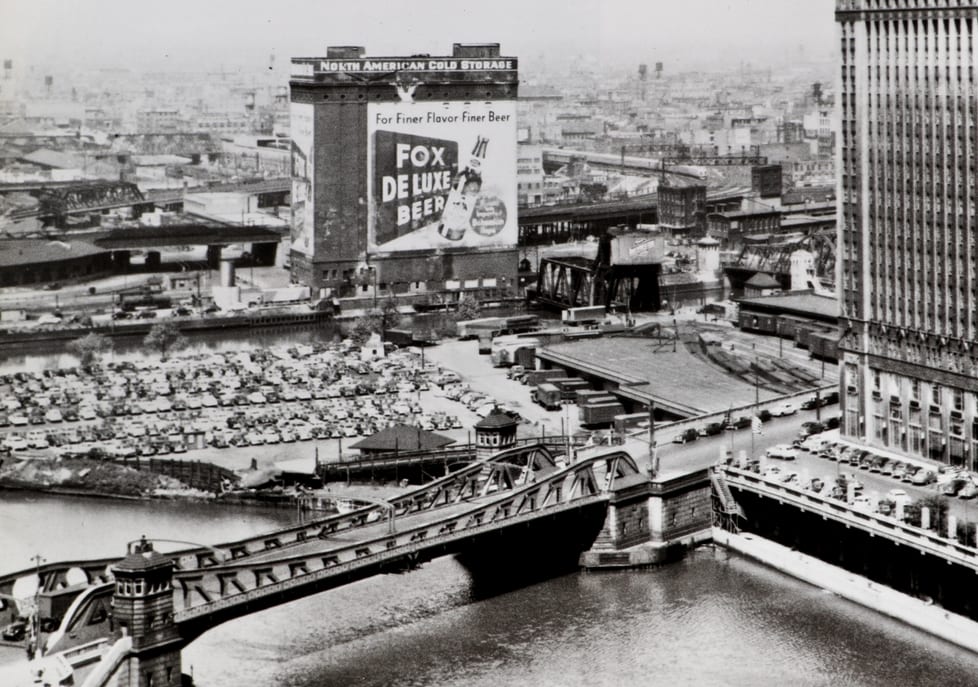
wolf point in the 1940's. for many years it served as a parking lot. underneath those cars are several privy pits that would not be discovered until the 1980's and then again in 2014, when construction of wolf tower commenced.
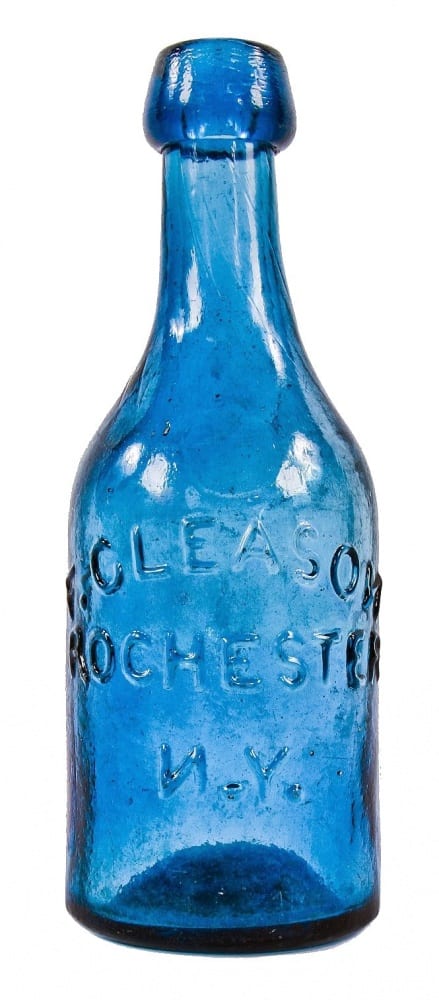
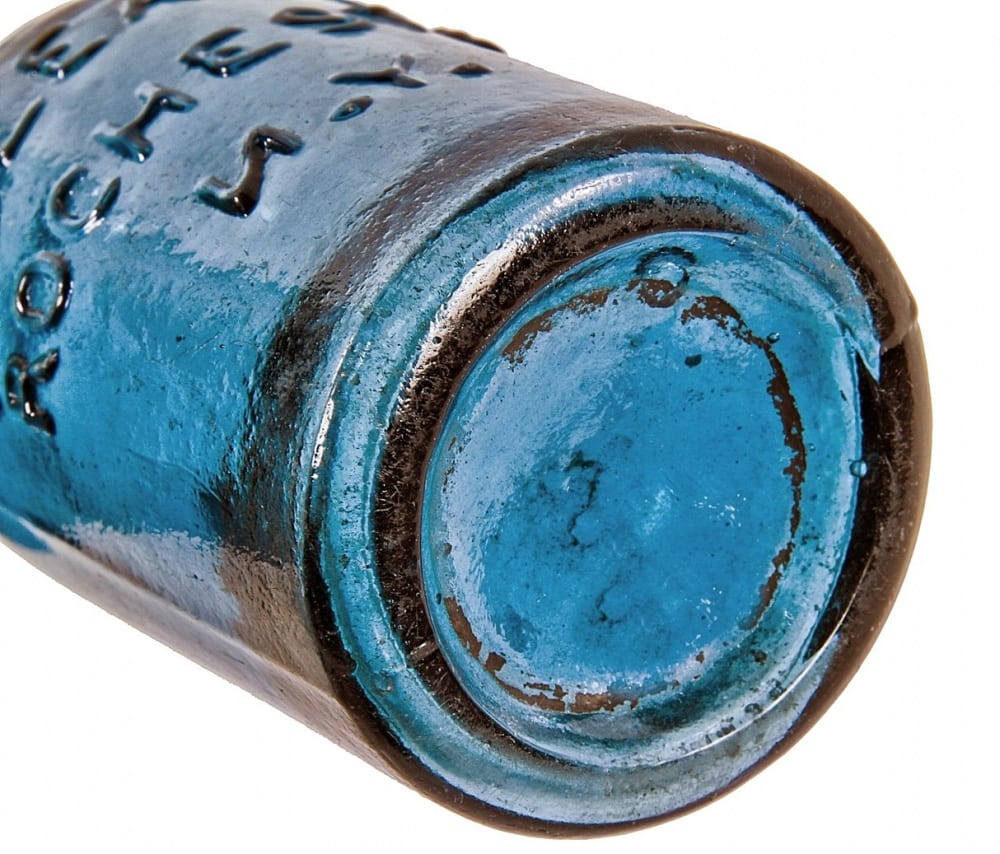
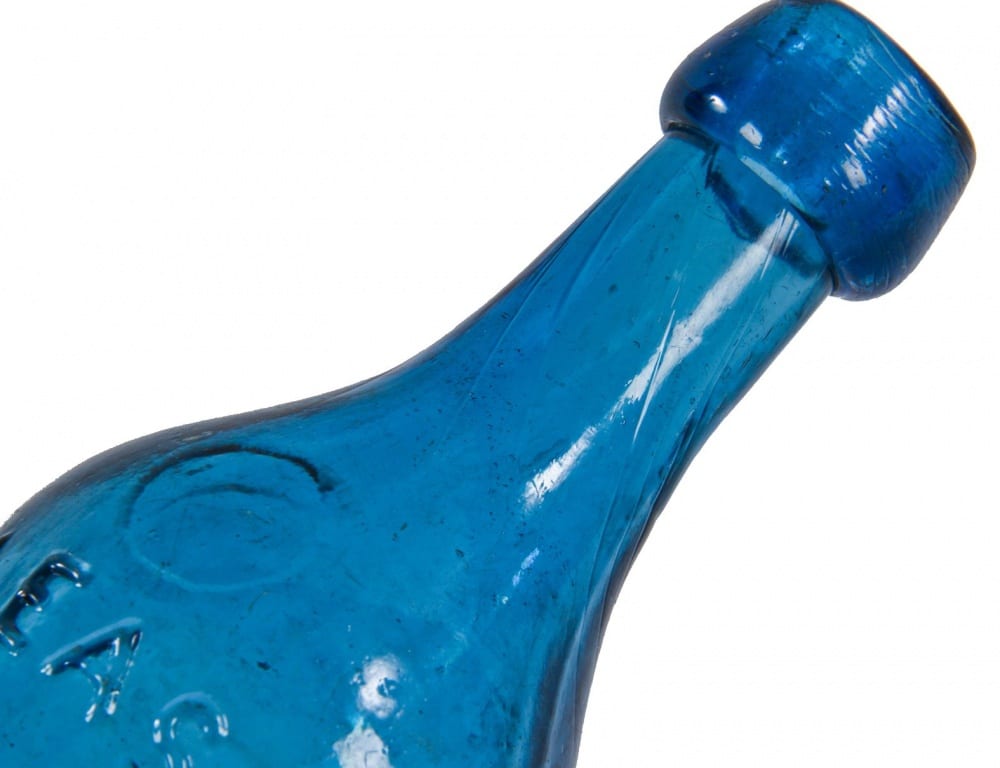
some interesting background information on wolf point beginning from the 1820's through the 1870's.
wolf point, purportedly named after a native american chief whose name translated to wolf, is located at the confluence of the north, south and main branches of the chicago river. this fork in the river is considered historically important in the development of chicago during its pioneer days. the point was home to chicago's first three taverns, its first hotel (i.e., sauganash hotel), its first ferry, its first drug store, its first church and the first bridges across the chicago river.
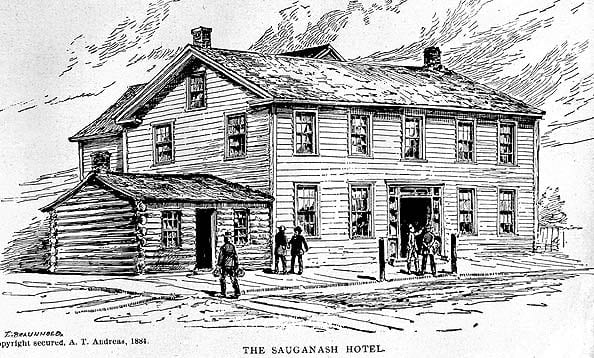
historically, the west bank of the river at the fork was called "wolf point," but in the 1820's and 1830's it came to denote the entire area and the settlement that grew up in and around the fork. in her 1856 memoir wau-bun, juliette kinzie states that 'the place was then called wolf point, from its having been the residence of an indian named "moa-way," or "the wolf." other alternate explanations are that it was so-named after the landlord of what would later be called the wolf point tavern killed a ferocious wolf and hung a painted sign of a wolf outside his tavern to commemorate the event, or that it was named by a soldier at fort dearborn because it was a place where wolves would gather at night. originally the term wolf point referred to the west bank of the chicago river at the fork junction of its branches, but it gradually came to refer to the whole region around the forks.
the confluence of the three branches of the river near wolf point provided inspiration for chicago's municipal device, a y-shaped, city identification symbol that can be seen on many buildings in chicago, and on city owned vehicles.
the first non-indigenous settler at wolf point may have been a trader named "guarie." writing in 1880, gurdon hubbard, who first arrived in chicago on october 1, 1818, stated that he had been told of guarie by antoine de champs and antoine beson, who had been traversing the chicago portage annually since about 1778. hubbard wrote that de champs had shown him evidence of a trading house and the remains of a cornfield supposed to have belonged to guarie. the cornfield was located on the west bank of the north branch of the chicago river, a short distance from the forks at what is now fulton street; early settlers named the north branch of the chicago river the guarie river, or gary's river.
james kinzie, the son of early settler john kinzie, built a tavern on the west bank of the river at wolf point in 1828. by 1829 this tavern was operated for kinzie by archibald caldwell, who was granted a liquor license on december 8 of that year. caldwell left chicago early in 1830 and elijah wentworth became the landlord of the tavern. he was in turn succeeded by charles taylor (1831–1833) and william walters (1833–1836). the tavern became known as the "wolf point tavern" or "wolf tavern" and a painted sign of a wolf was hung outside the tavern by approximately 1833.
in about 1829, samuel miller and his brother john opened a store on the north bank of the river at the forks. in 1830, they enlarged their store and began to operate it as a tavern in competition with the wolf point tavern. on june 2, 1829 samuel miller and archibald clybourn had been authorized to operate the first ferry across the chicago river. clybourn was the ferry man, crossing the north branch of the river between miller's tavern and the wolf point tavern. in 1831 john miller built a log house near his brother's tavern that he used as a tannery; chicago's first recorded factory. samuel miller sold the tavern and moved away following the death of his wife in 1832.
mark beaubien opened the eagle exchange tavern in a log cabin on the south bank in 1829. in 1831 beaubien added a frame addition and opened the sauganash hotel, chicago's first hotel. immediately adjacent to the hotel's public bar was chicago's first drug store. beaubien left the sauganash hotel in 1834, but the hotel continued in operation until it was destroyed by a fire in 1851. the site of the sauganash hotel was redeveloped as the wigwam in 1860; the site today, located at 191 north wacker, is designated as a chicago landmark.
james kinzie built the green tree tavern at the northeastern corner of canal and lake streets in 1833. the tavern went through a succession of owners and name changes before being moved in 1880 to 33, 35, and 37 milwaukee avenue. in 1902 plans were made to preserve the building and move it to garfield park; however, the hotel unfortunately collapsed before work could start on this project.
rev. jesse walker started the first church on june 14, 1831, with ten members in a log cabin. in 1838, the congregation floated their log cabin across the chicago river and rolled it on logs to the corner of washington and clark streets, where it is now the first united methodist church chicago temple.
archibald clybourn's ferry across the north branch of the river was replaced by a bridge in the winter of 1831 and 1832, and a bridge across the south branch of the river located between lake and randolph streets was added in the winter of 1832 and 1833. early settlers j. d. caton, john bates, charles cleaver, and john noble wrote in a letter in the fall of 1883 that both of these bridges were constructed of logs; they were about 10 feet wide, and cleared the river by about 6 feet.
when the illinois and michigan canal opened in 1848, the landmass at wolf point was decreased by dredging to accommodate a turning basin for ships. in the autumn of the same year the galena and chicago union railroad opened chicago's first railroad depot at wolf point, on the southwestern corner of kinzie and canal streets.
by 1857 the site of wolf point tavern was being used as a lumber yard; the fulton elevator, one of chicago's earliest grain elevators, was built just to the north of the former tavern in 1852. several blocks to the west of wolf point were destroyed in a large fire on september 15, 1859. the fulton elevator survived this, and the great chicago fire of 1871, but was burned down on september 7, 1873. it was rebuilt in the same year, and another grain elevator, the st. paul elevator, was added immediately to the south of the original in 1879.
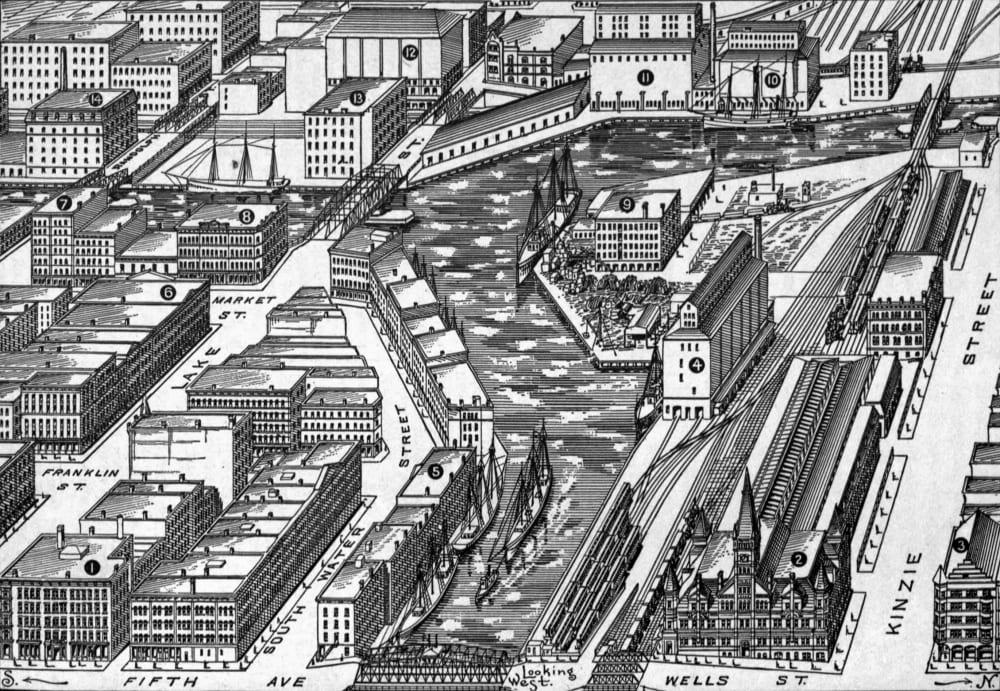
This entry was posted in , Miscellaneous, Bldg. 51, New Products, Events & Announcements, New Acquisitions & Bldg. 51 Feed on December 20 2014 by Eric
WORDLWIDE SHIPPING
If required, please contact an Urban Remains sales associate.
NEW PRODUCTS DAILY
Check back daily as we are constantly adding new products.
PREMIUM SUPPORT
We're here to help answer any question. Contact us anytime!
SALES & PROMOTIONS
Join our newsletter to get the latest information
























